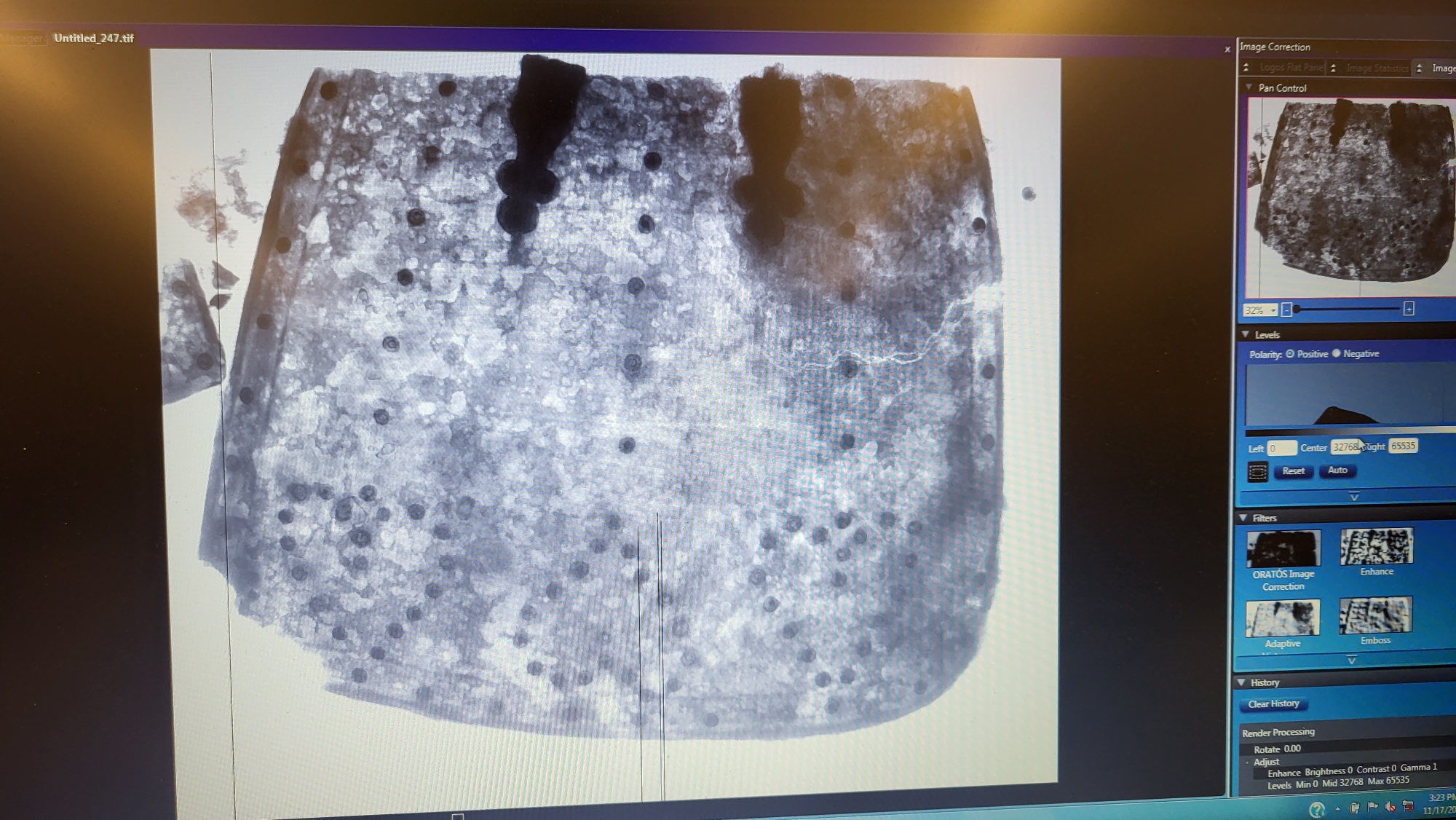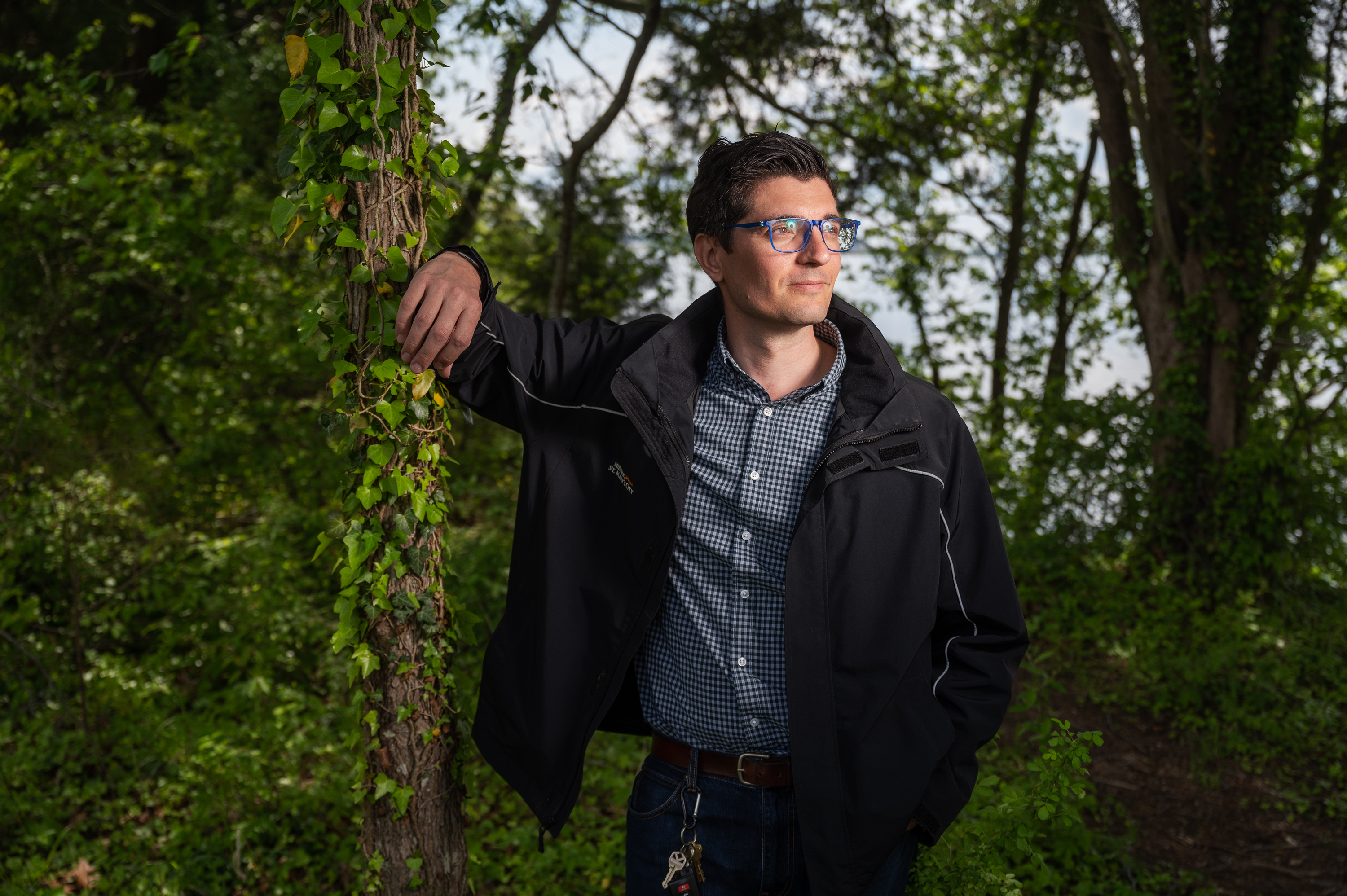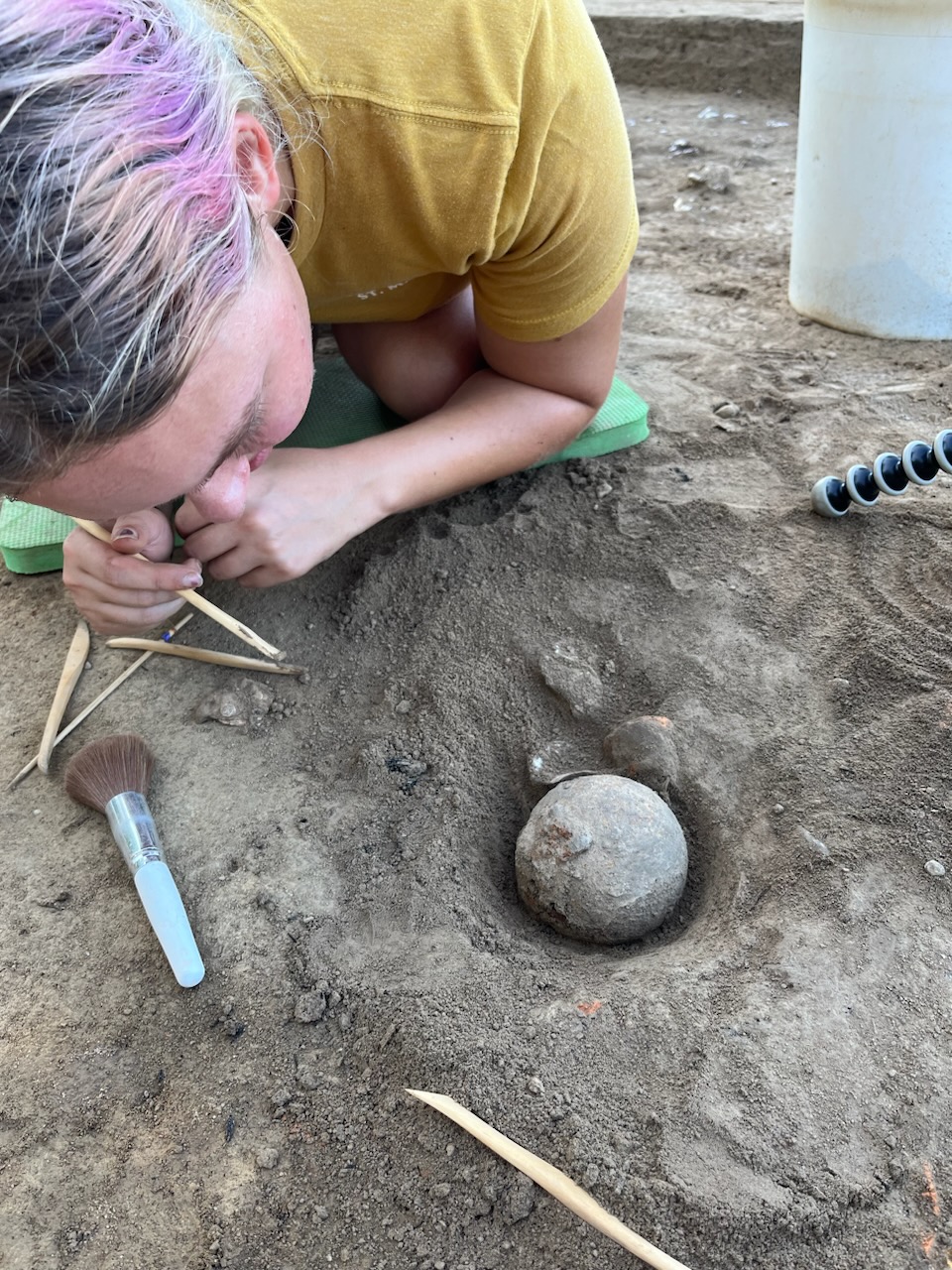
Rare armor unearthed at site of 17th-century fort in Maryland
The slab of metal came out of the ground dirty and corroded after more than 300 years in the soil of rural Maryland.
It was slightly concave, about the size of a cafeteria tray, and didn’t look like much. But the archaeologists at Historic St. Mary’s City thought they knew what it might be. And an X-ray — which saw through the surface grit — proved them right.
What they found late last year was a rare piece of 17th-century armor called a tasset, which was designed to hang from a breastplate and protect one of the wearer’s thighs during battle.
It had been brought by the first European colonists who arrived in the mid-1600s to establish one of the earliest settlements in what would become the United States.
“The X-ray, everybody went nuts over that,” said Travis Parno, director of research and collections at Historic St. Mary’s City, this month. “… It really just brought the whole thing to life.”
It was one of a series of recent discoveries to come out of a major archaeological project that in 2021 discovered the outlines of the long-lost palisaded fort erected in Maryland by the first White settlers in 1634.
In March, the project unearthed the skeleton of a teenager with leg fractures who may have been among the first arrivals.
The archaeologists have also dug up, among other things, a pair of 17th-century scissors, a decorative braid made of metal thread that may have been on a glove or a coat, and the outline of a large building the settlers erected shortly after they landed.

Travis Parno, the director of research and collections at Historic St. Mary’s City.

Archaeological technician Eva Miller excavates an iron cannonball at the colonial dig site at Historic St. Mary’s City.
The structure outline marks “one of the largest buildings from this early colonial period that we’ve ever found,” Parno said. “And given the time period, that it’s 1630s, absolutely one of the earliest and largest buildings ever built in colonial Maryland.”
“But the question of ‘what is it?’” has been a mystery, he said in a telephone interview. “Was it somebody’s home? Was it a public building? Did it have a religious function? A civic function? A military function?”
Early accounts say the colonists started building the fort’s storehouse and guardhouse while they were still living aboard the Ark and the Dove, the ships that brought them from Britain across the Atlantic Ocean and up the St. Mary’s River in March 1634.
Parno said that early in the dig the archaeologists spotted what looked like the imprint of a cellar, which they think was used for storage and later for refuse.
They started excavating and realized that the cellar was attached to a large building — indicated by the pattern of stains in the earth left by timber posts.
It had several rooms, and because the timbers seemed to have been large and sturdy, it may have been a story and a half in height, he said.
But it had no fireplace, so it probably wasn’t a home or a guardhouse, which would need heat. Musket parts and 1,200 pieces of lead shot were found in two rooms that may have housed armaments.
But most of the shot was buckshot or smaller, for hunting not combat, he said.
There were also numerous glass and stone trade beads from Europe and Asia that were probably used for commerce with local Native Americans.
Parno said all of this suggested a storehouse for the first 150 colonists, who included many English Catholics fleeing Protestant persecution back home.
Its discovery is important, he said: “This is one of the first things the colonists did when they got off the boat.”

A piece of 17th-century armor called a tasset that was unearthed last year at the archaeological site at St. Mary’s, shown shortly after it was dug up.
The tasset was found in the excavation of the cellar, which became a trash pit later, after the demise of the storehouse.
It was decorated with rivets making the shapes of three hearts and was probably part of a set of armor that included a second tasset — there was one for each leg — a metal breastplate and a helmet, Parno said.
No other pieces have turned up, but a fragment of a tasset was found elsewhere at St. Mary’s about 40 years ago. Metal helmets and breastplates have been found at the 17th-century colonial site of Jamestown, Va.
The colonists brought many things on their journey: food, tools, weapons, armor. As they experienced life in southern Maryland, they adjusted. Archaeologists think tassets may have been items the colonists found were no longer useful.
Finding the tasset “tells us there was body armor here in the colony,” Parno said. “It also tells us [the colonists] were adapting to the environment. The tassets may have been something that were discarded because they were deemed unnecessary.”
“They’re heavy,” he said. “It’s a hot, humid environment. So you get rid of the tassets. … You keep your breastplate, though, because that’s protecting your core.”

A conjectural drawing of the 1634 fort at the St. Mary’s settlement in Maryland.

A decorative braid made of woven metal threads, shown here under a microscope, found during the archaeological dig in St. Mary’s.
As for the other artifacts, the metal braid was probably made with silver thread, a very rare find, he said. “This is incredibly, incredibly fine silver-like thread that has been wound into this kind of braid.”
“We found about six or seven clusters of metallic fiber,” he said. “Somebody at some point threw away at least one, possibly two, articles of clothing” decorated with the braid. It could have been on a pair of gloves or a saddle or a uniform.
St. Mary’s became Maryland’s first capital and was home to the first State House.
But the fort did not last long. It was built in 1634, but after 1642, mentions of it in the records all but vanish, Parno said. “We know at least by [1645] but apparently as early as 1642 the fort’s not there anymore.”
The original settlement at St. Mary’s was later abandoned, too. The capital moved to Annapolis in the 1690s, and the site was left undisturbed and ripe for archaeology.
Parno said there could be a dozen or more structures still to be found within the perimeter of the fort.
“We’re scratching the surface,” he said. “We’ve got years ahead of us to dig into this time period.”
News Related-
Russian court extends detention of Wall Street Journal reporter Gershkovich until end of January
-
Russian court extends detention of Wall Street Journal reporter Evan Gershkovich, arrested on espionage charges
-
Israel's economy recovered from previous wars with Hamas, but this one might go longer, hit harder
-
Stock market today: Asian shares mixed ahead of US consumer confidence and price data
-
EXCLUSIVE: ‘Sister Wives' star Christine Brown says her kids' happy marriages inspired her leave Kody Brown
-
NBA fans roast Clippers for losing to Nuggets without Jokic, Murray, Gordon
-
Panthers-Senators brawl ends in 10-minute penalty for all players on ice
-
CNBC Daily Open: Is record Black Friday sales spike a false dawn?
-
Freed Israeli hostage describes deteriorating conditions while being held by Hamas
-
High stakes and glitz mark the vote in Paris for the 2030 World Expo host
-
Biden’s unworkable nursing rule will harm seniors
-
Jalen Hurts: We did what we needed to do when it mattered the most
-
LeBron James takes NBA all-time minutes lead in career-worst loss
-
Vikings' Kevin O'Connell to evaluate Josh Dobbs, path forward at QB
